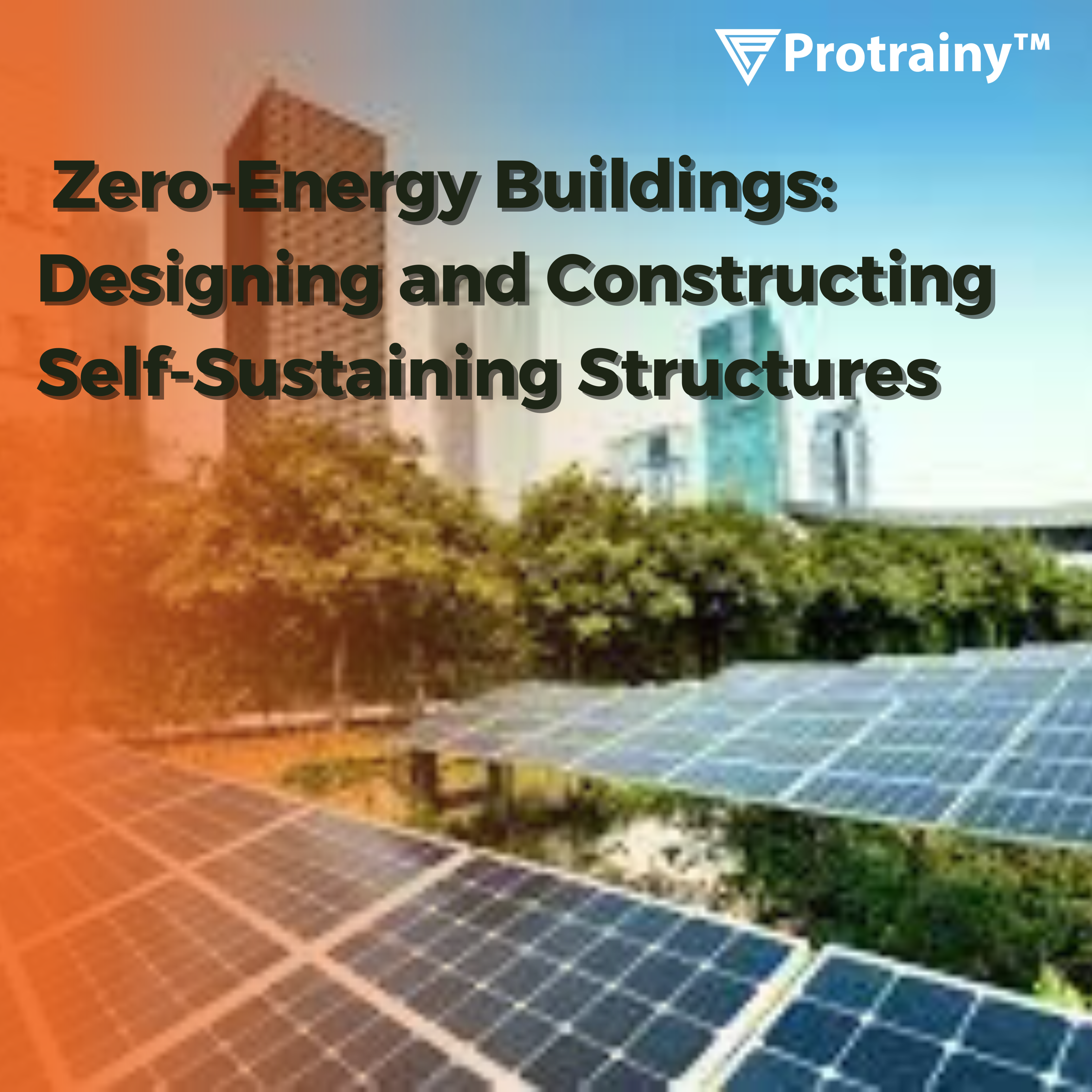Blogs
- Home
- Blogs
Zero-Energy Buildings: Designing and Constructing Self-Sustaining Structures with lesser Carbon footprint.
Protrainy | Aug. 19, 2023, 9:23 a.m.

In a world increasingly concerned with sustainability and the environmental impact of human activities, the concept of zero-energy buildings emerges as a beacon of hope. These innovative structures are not just architectural marvels but also symbols of our commitment to a greener and more sustainable future. In this blog, we'll delve into the fascinating realm of zero-energy buildings, exploring their design principles, construction methods, and the potential they hold to revolutionize the way we think about sustainable living. Zero-energy buildings, often referred to as "net-zero energy" or "energy-neutral" buildings, are structures designed and constructed to generate as much energy as they consume over the course of a year. This remarkable feat is achieved through a combination of innovative design strategies, advanced technologies, and a deep understanding of the surrounding environment.
At the core of every zero-energy building lies a meticulous design process that integrates efficiency and aesthetics seamlessly. Architects and engineers prioritize passive design strategies, such as optimizing natural lighting, harnessing solar heat gain, and maximizing natural ventilation. These strategies not only minimize energy consumption but also create spaces that are comfortable and inviting. The cornerstone of zero-energy buildings is the integration of renewable energy sources. Solar panels, wind turbines, and geothermal systems work harmoniously to generate clean energy on-site. By utilizing these sources, zero-energy buildings produce enough energy to power their own needs, with surplus energy often being fed back into the grid.
Advanced technologies play a pivotal role in achieving net-zero energy status. High-performance insulation, energy-efficient HVAC systems, smart lighting controls, and energy-recovery ventilation are just a few examples of the cutting-edge solutions that help minimize energy waste while maintaining occupant comfort. Site selection and optimization are key considerations in zero-energy building design. Factors like solar orientation, prevailing winds, and local climate influence the layout and orientation of the building. By leveraging the natural resources and characteristics of the site, these structures maximize energy generation and minimize energy consumption.
The Economic and Environmental Benefits
Zero-energy buildings bring a host of benefits beyond environmental sustainability. While the initial costs of design and construction might be higher, the long-term savings from reduced energy bills can be substantial. Additionally, these buildings contribute to lowering greenhouse gas emissions and reducing the overall carbon footprint.
Case Studies: Showcasing Zero-Energy Triumphs
Numerous real-world examples stand as testaments to the viability of zero-energy building design. The Bullitt Center in Seattle, Washington, and the Research Support Facility at the National Renewable Energy Laboratory in Golden, Colorado, are prime examples of buildings that have achieved net-zero energy status through thoughtful design, renewable energy integration, and innovative technologies. While the concept of zero-energy buildings holds immense promise, there are challenges to overcome. The availability of renewable energy sources, the initial investment required, and the need for ongoing maintenance and monitoring are considerations that require careful attention.
Conclusion
Zero-energy buildings represent a paradigm shift in the way we approach architecture and construction. They embody the fusion of innovative design, advanced technologies, and a deep commitment to sustainability. As our world grapples with the urgent need for eco-friendly solutions, these self-sustaining structures stand as a beacon of possibility, inspiring us to reimagine our built environment and strive for a future where our buildings not only coexist with nature but actively contribute to its preservation.
